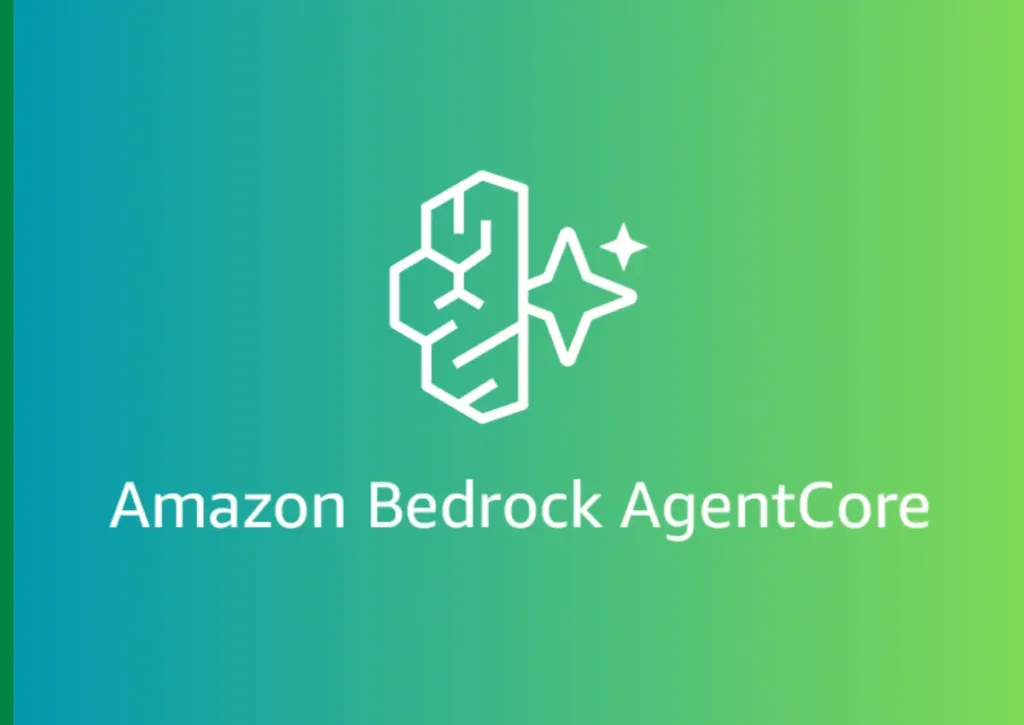In the recent years alone, the artificial intelligence landscape has gone on a phenomenal shift as what started as a mere prompt-response system has evolved into a complex artificial intelligence agent with the ability to reason and act independently. Amazon Web Services (AWS) has recently announced a revolutionary product that helps to resolve the most burning issue of enterprise AI agent development that is known as Amazon Bedrock AgentCore. In this deeply tech researched insight you are going to know about it’s core components and how you can get started with this AgentCore.

What is AWS AgentCore?
Amazon Bedrock AgentCore is a paradigm change in how organizations are deploying and running AI agents at an enterprise level. Available at the AWS Summit New York City 2025, this end-to-end platform enables developers to run, deploy, and maintain AI agents in high-security environments within any framework and AI model because it offers enterprise-level infrastructure to developers.
Swami Sivasubramanian, VP of AWS agentic AI, said AgentCore will have a step change in what can be done with AI agents. The solution to the platform deals with the inherent catch that has plagued the AI development teams, which is the inability to spend months establishing base infrastructure rather than working on core agent functioning.
Core Components of AgentCore
1. AgentCore Runtime
The basis of the platform, AgentCore Runtime provides low-latency serverless architectures that have strong session isolation. This element is compatible with the most popular and open-source frameworks, such as CrewAI, LangGraph, LlamaIndex, and Strands Agents, and effectively performs multimodal workloads and agent processes.
2. AgentCore Memory
The processes of memory management enable AI agents to learn, and they do this by retaining context. AgentCore Memory is a session and longitudinal memory providing agent and personal past context into future execution and from which agents learn constantly through prior interactions.
3. AgentCore Observability
The active life of AI agents in production has been a major challenge for debugging and monitoring purposes. AgentCore Observability provides full-scale step-by-step visualization of agent execution with rich metadata tagging, per-agent scoring, analysis of trajectories, and sophisticated troubleshooting filtering.
4. AgentCore Identity
Enterprise environments are of utmost importance as far as security and access control are concerned. AgentCore Identity allows AI agents to securely use AWS services and third-party services such as GitHub, Salesforce, and Slack on behalf of users or with advance-authorized consent—userless.
5. AgentCore Gateway
The AgentCore Gateway converts the available APIs and the AWS Lambda functions into agent-based tools, which offer united access to the protocols, such as Model Context Protocol (MCP), and functionality of runtime discovery.
6. Code Interpreter/AgentCore Browser
In the case of web automation workflows, AgentCore Browser gives managed web browser instances that are scaled based on demand. In the meantime, Code Interpreter in AgentCore provides separate sandboxes in which to execute agent-generated code in a safe way.
The Business Impact of Agentic AI
The fact that AWS has invested tremendously in agentic AI and will invest another 100 million in its generative AI innovation state shows the transformative capabilities of the technology. It is all about providing organizations with a real possibility of hyper automation to be provided so much as to not only generate and summarize but to behave in the place of human beings as well, as Taimur Rashid, Managing Director at Generative AI Innovation and Delivery at AWS, puts it.
This is the transition of AI to an agentic nature, which is not simply a technological progress but also a paradigm shift in how companies may use artificial intelligence technologically both to improve their efficiency and also to innovate.
Industry Expert testimonials
The strategic significance of AgentCore has been acknowledged by the industry analysts. According to Bradley Shimmin of Futurum Group, AgentCore is a refinement of the existing AI frameworks and orchestration work being done by AWS, but it has the same effect of offering developers a consistency of interface to create teams, essentially an important technology that AWS is currently shipping.
Jason Andersen of Moor Insights states that AWS is building an AI development toolchain in which “developers have a much easier time building an agentic stack,” focusing on professional and enterprise developers with advanced needs.
Addressing Enterprise Challenges
Accuracy and Reliability
The President of A&I Solutions, Inc., John Balsavage, points at the dire need to use the AgentCore Observability to solve the problem of accuracy. Although 90 percent performance accuracy may be good enough, in the case of enterprise applications, this is usually less than perfect.
The observability tools will allow developers to debug and monitor the performance of the agents, tracing them to allow for meeting the reliability standards that are required in the enterprise.
Development Complexity
Traditional AI agent development requires extensive infrastructure work for session management, identity controls, memory systems, and observability. AgentCore eliminates this complexity, allowing development teams to focus on creating innovative solutions rather than building foundational infrastructure.
Integration and Scalability
The platform’s support for multiple frameworks and models, combined with its serverless architecture, addresses the scalability challenges that have hindered AI agent adoption in large organizations.
AWS Marketplace Integration
One of the major opportunities of AgentCore is that it is a part of the AWS Marketplace AI Agents and Tools. This centralized catalog offers access to pre-built agents, agent tools, and services, hence allowing the organizations to utilize existing solutions whilst developing custom applications.
According to Bradley Shimmin, this is the vendor, which will improve the business problem-solving abilities of AgentCore by providing integration in this marketplace. It is not only about the data model; it is all about the business and what the data means.
How to Get Started with AgentCore
AgentCore is in preview release, and developers can begin experimenting with it using the AgentCore SDK. The framework-agnostic nature of the platform allows teams to continue using the tools they like during the development process and acquire enterprise-level functionality.
Organizations interested in implementing AgentCore should consider:
- Assessment of current AI initiatives and identification of use cases that would benefit from agent-based approaches
- Evaluation of existing development frameworks and how they align with AgentCore’s capabilities
- Planning for integration with existing AWS services and third-party tools
- Training and skill development for development teams transitioning to agentic AI development
Final thoughts
Amazon Bedrock AgentCore represents an important landmark in AI computer development, providing a complete answer to the issue that has restrained the usage of AI agents on an enterprise level. Built on a strong infrastructure, security settings, and the developer-friendly mindset, AgentCore will increase the pace of the transition of organizational operations in the use of artificial intelligence.
Most enterprises interested in utilizing the benefits of agentic AI will require a framework capable of building, deploying, and scaling AI agents. AgentCore is a framework that contains everything enterprises require to build, deploy, and scale AI agents effectively. When the platform transitions to general availability, it is expected that it will form the core of the enterprise AI technology stack.



